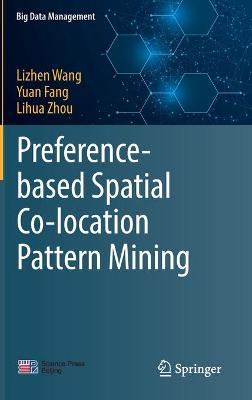Big Data Management
1 total work
Preference-based Spatial Co-location Pattern Mining
by Lizhen Wang, Yuan Fang, and Lihua Zhou
Published 5 January 2022
The development of information technology has made it possible to collect large amounts of spatial data on a daily basis. It is of enormous significance when it comes to discovering implicit, non-trivial and potentially valuable information from this spatial data. Spatial co-location patterns reveal the distribution rules of spatial features, which can be valuable for application users. This book provides commercial software developers with proven and effective algorithms for detecting and filtering these implicit patterns, and includes easily implemented pseudocode for all the algorithms. Furthermore, it offers a basis for further research in this promising field.
Preference-based co-location pattern mining refers to mining constrained or condensed co-location patterns instead of mining all prevalent co-location patterns. Based on the authors’ recent research, the book highlights techniques for solving a range of problems in this context, including maximal co-location pattern mining, closed co-location pattern mining, top-k co-location pattern mining, non-redundant co-location pattern mining, dominant co-location pattern mining, high utility co-location pattern mining, user-preferred co-location pattern mining, and similarity measures between spatial co-location patterns.
Presenting a systematic, mathematical study of preference-based spatial co-location pattern mining, this book can be used both as a textbook for those new to the topic and as a reference resource for experienced professionals.
Preference-based co-location pattern mining refers to mining constrained or condensed co-location patterns instead of mining all prevalent co-location patterns. Based on the authors’ recent research, the book highlights techniques for solving a range of problems in this context, including maximal co-location pattern mining, closed co-location pattern mining, top-k co-location pattern mining, non-redundant co-location pattern mining, dominant co-location pattern mining, high utility co-location pattern mining, user-preferred co-location pattern mining, and similarity measures between spatial co-location patterns.
Presenting a systematic, mathematical study of preference-based spatial co-location pattern mining, this book can be used both as a textbook for those new to the topic and as a reference resource for experienced professionals.
